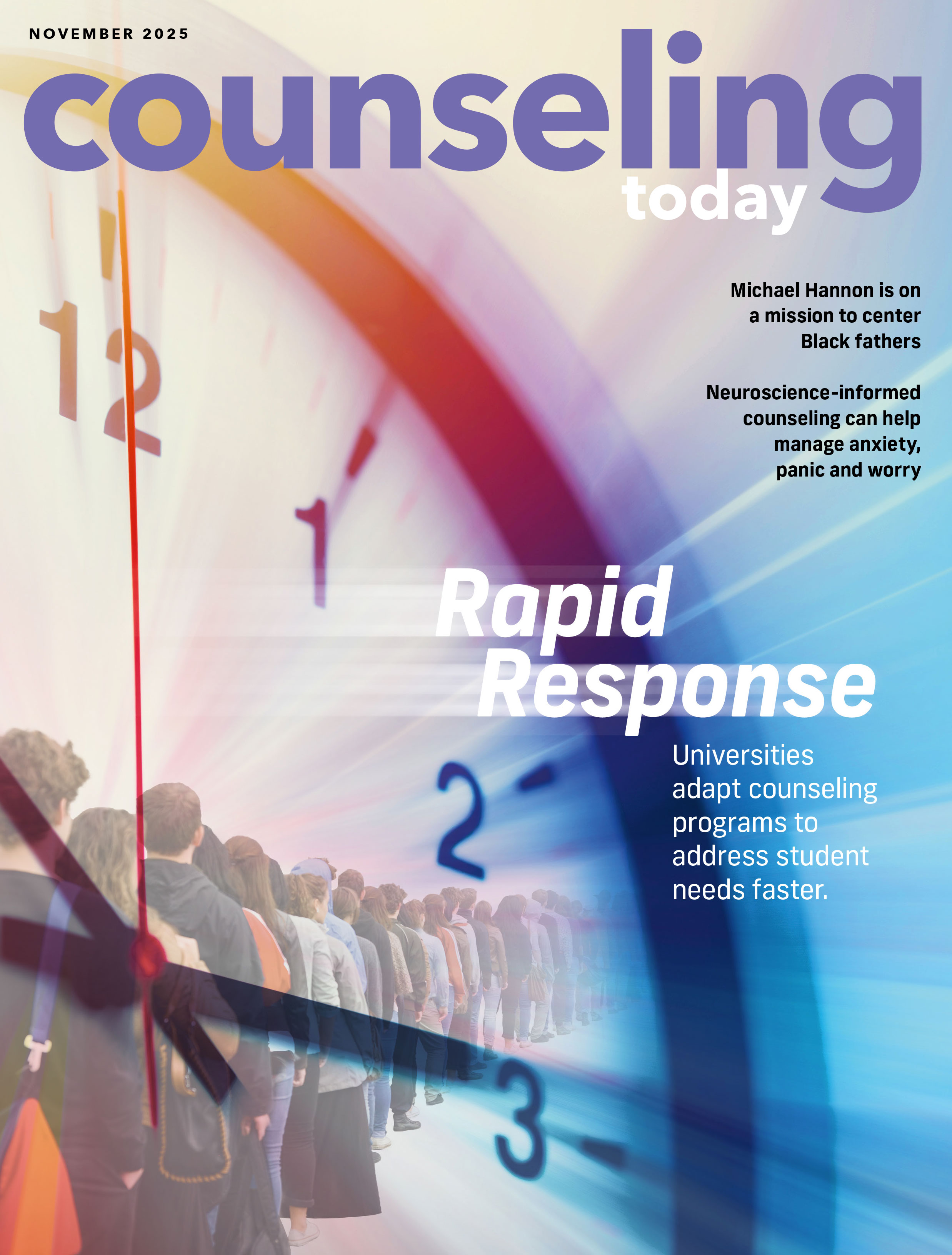Helping a School Community Heal after Suicide
By Alexander T. Becnel, PhD, LCPC
September 2024

One August morning during my second year as a school counselor, I walked into my office to find the assistant principal waiting for me. He informed me that one of our students died by suicide earlier that morning. I was shocked. Although I was accustomed to conducting suicide assessments and providing suicide prevention programming, I never expected a student would actually die by suicide. In the coming days, I would experience firsthand how my lack of preparedness would affect me both personally and professionally.
Unfortunately, more school counselors are sharing these types of experiences as youth suicide worsens in the U.S. According to the Centers for Disease Control and Prevention, suicide rates for people ages 10 to 24 rose over 60% between 2007 and 2021, and nearly a quarter of high school students reported they had seriously considered suicide.
Some of the most alarming rate increases have occurred among middle school students, LGBTQ+ students and Black students. Most school counselors work with students who have a history of suicidal thoughts or behaviors, and about a third of school counselors have experienced a student’s death by suicide.
The reality of youth suicide in schools is no longer a matter of if but when. Consequently, school counselors must be prepared for suicide postvention, an organized response to a death by suicide that aims to promote healing, alleviate the negative impact of suicide exposure and prevent additional suicides.
Before the Crisis
To enact a sensitive and timely postvention response, several considerations must be made in advance. First, school counselors should help other members of the school community understand that youth suicide is a real issue for all schools. Even if a school district has an outstanding suicide prevention program and modern approaches to suicide assessment, predicting who will die by suicide is extremely difficult.
With youth suicide rates increasing, school counselors must help their schools be prepared for these worst-case scenarios. Denial of this issue or the fact that it could happen in your school or district only leads to poor postvention, which may increase the risk of suicidal thoughts and actions among those close to, or aware of, the person who died.
Schools also need to establish a crisis response team, which should include a variety of school personnel, such as administrators, counselors, school nurses, school resource officers and support staff. Each member of the crisis team has a clear role they will be responsible for after a student dies by suicide. For example, one member can establish and enact an emergency phone tree to direct calls so the school will not be inundated with phone calls from parents, family members, police officers or media.
Finally, school counselors will need to form community partnerships to ensure an effective postvention response. The news of the death will reverberate through the school quickly, creating a large and sudden need for mental health services, which can overwhelm the school’s resources. To prevent this, school counselors can utilize these partnerships by asking counselors from other nearby schools and mental health agencies to help provide crisis counseling and support services in the immediate aftermath.
In the Aftermath
A school counselor’s first task after learning about a student death by suicide will be to work with administrators to communicate with the family of the deceased student. Although the school principal typically handles the initial contact, school counselors should be available to advise and support school leaders through these difficult undertakings. These conversations allow schools to offer support to the family, identify close friends of the deceased student who may be more intensely affected and learn how the surviving family members want to share the news. Some families may not want to disclose that the student died by suicide, so schools may need to find a balance between respecting the family’s wishes and maintaining open communication with the school community.
When communicating the news to staff, school counselors should be prepared to identify staff members who may need additional grief support. Additionally, they can coach teachers on how to respond appropriately to grieving students. Even though teachers should not be asked to counsel grieving students, the school counselor can help them develop attentive and compassionate ways to communicate with students during this sensitive time.
Notifying students about the death for the first time is a critical period of postvention. School counselors should expect a large, sudden influx of students who need crisis support as they learn about the loss of their classmate.
If schools share the news in a large assembly or through the announcement system, a mass of grieving students could easily overwhelm the counseling office’s capabilities to provide crisis support services. To mitigate this issue, school counselors can work with school leaders to develop a single statement that teachers and members of the crisis team use to share the news with students in smaller groups, such as by classroom. Schools may also consider stationing members of the crisis team near classrooms so that they can walk students to the counseling offices if necessary.
Following the initial aftermath, school counselors should carefully monitor at-risk students, such as family members and close friends of the deceased student and students with histories of suicidal ideation or serious mental illness. Even if some students appear to be managing the loss appropriately, grief can be complex and become more complicated as time passes. Some students may need to be connected with a counselor outside of school for intensive or ongoing treatment.
School counselors will also need to help students find appropriate ways to memorialize the deceased student. Some students may want to honor their classmate by decorating lockers or hanging posters. Although these memorials may help some students cope with the loss, they may further trigger or reinflame the grief for other students. School counselors should work with students to create an appropriate memorial that is placed in a strategic location in the school for a limited amount of time.
Counselors need to remember to take care of themselves personally and professionally during this time as well. Debriefing with colleagues, engaging in peer supervision or seeking personal counseling can help counselors feel supported and allow them to process any grief or emotions they may experiencing because of the suicide. By engaging in these postvention practices, school counselors can successfully navigate these difficult experiences and help the community begin to heal.
DISCLAIMER
Opinions expressed and statements made in this magazine by the article authors or those quoted within articles do not necessarily represent the opinions of the editors or policies of the American Counseling Association.


